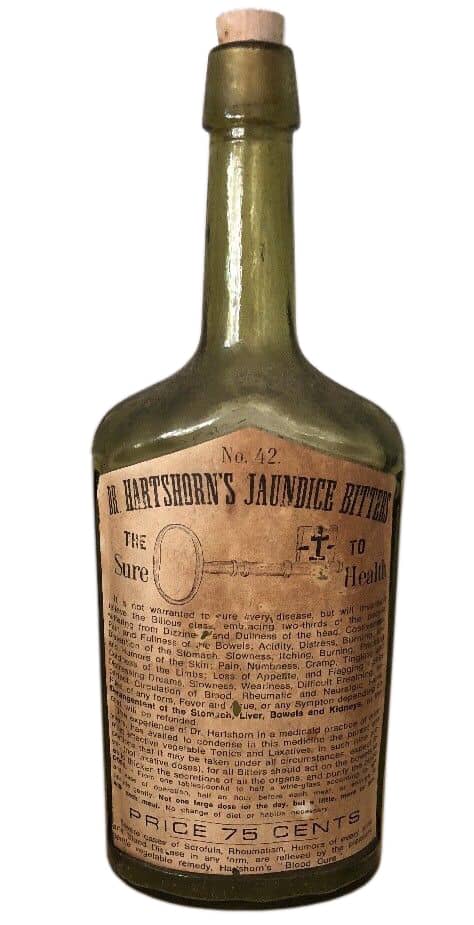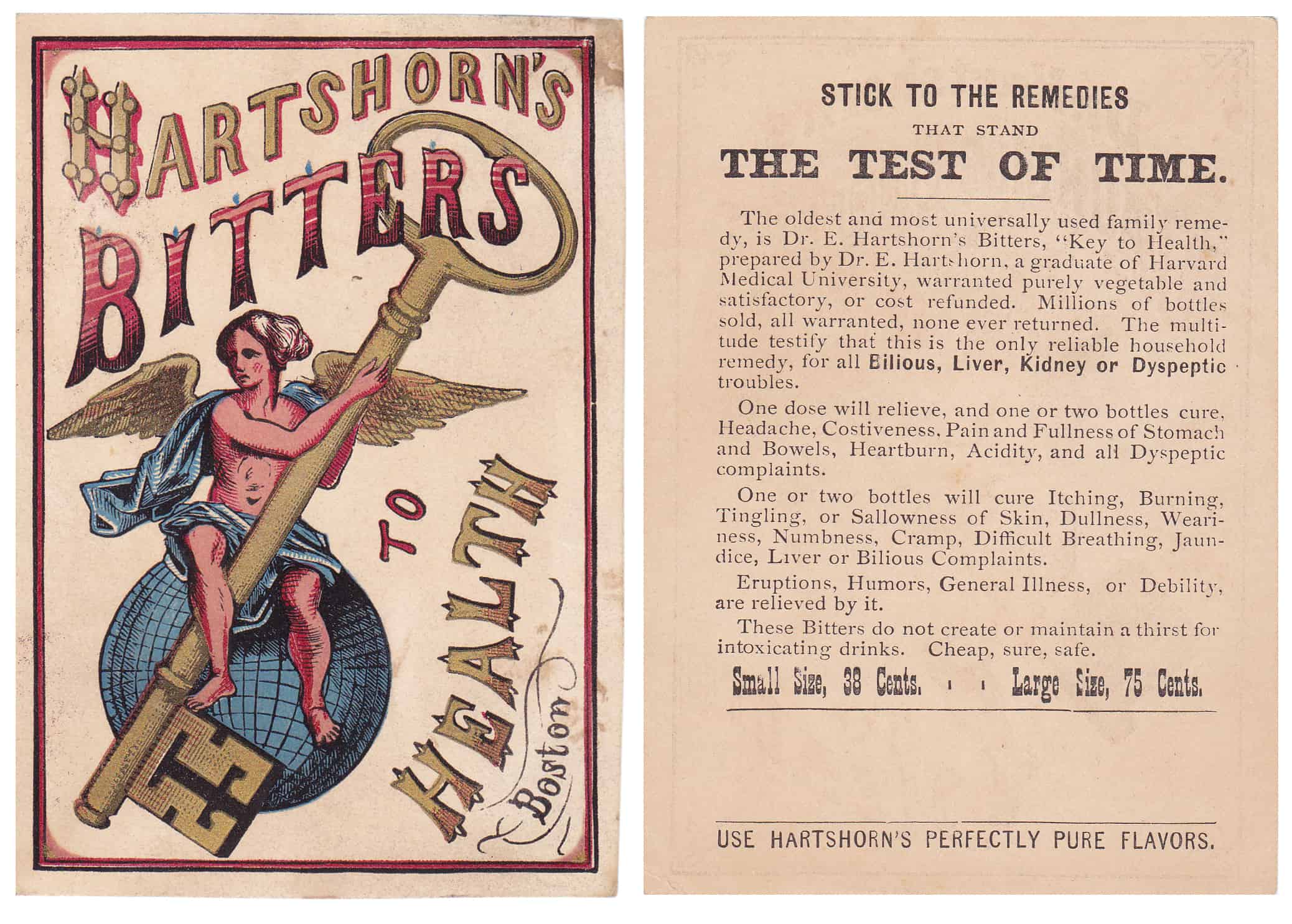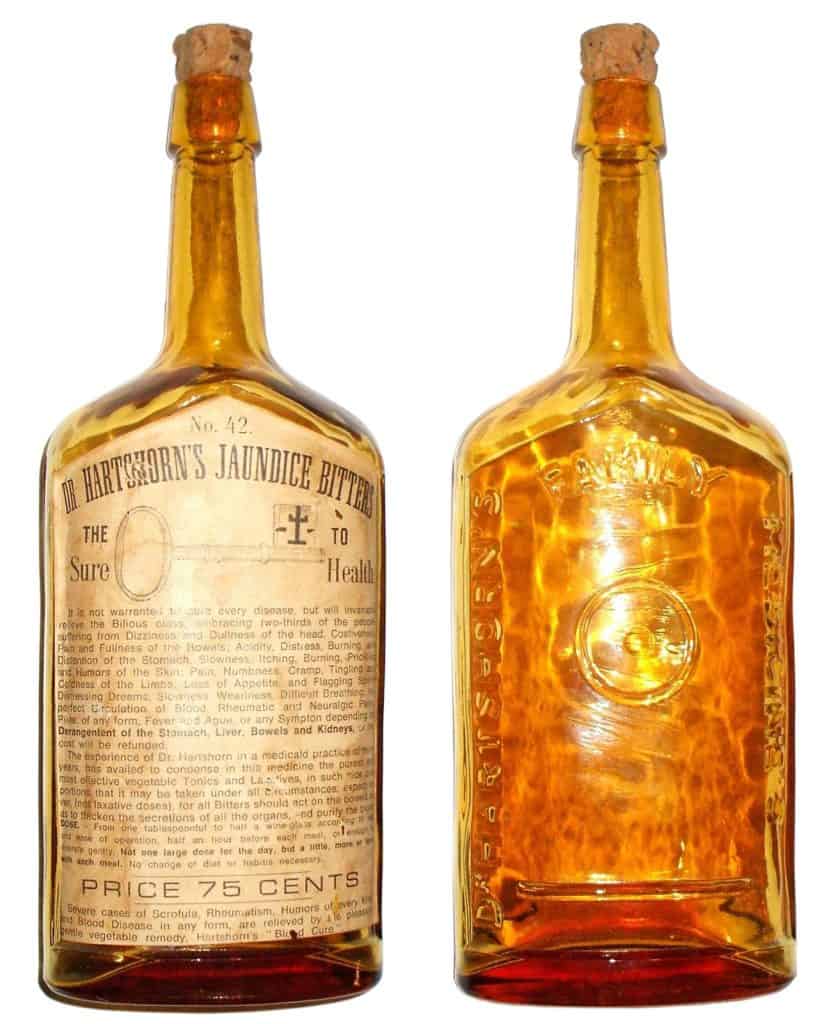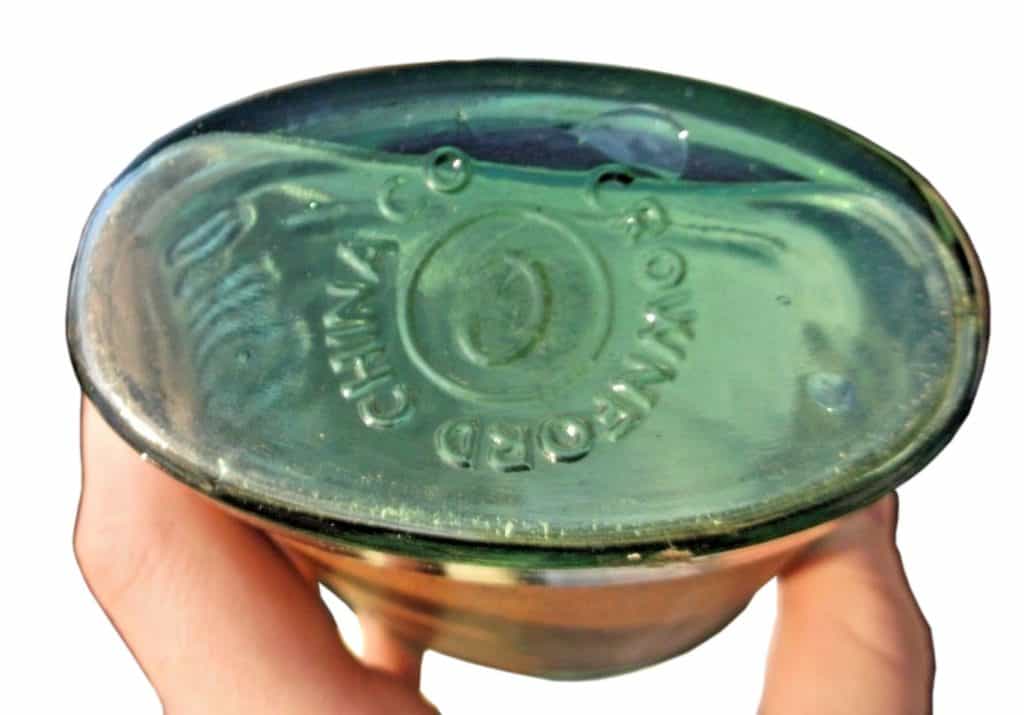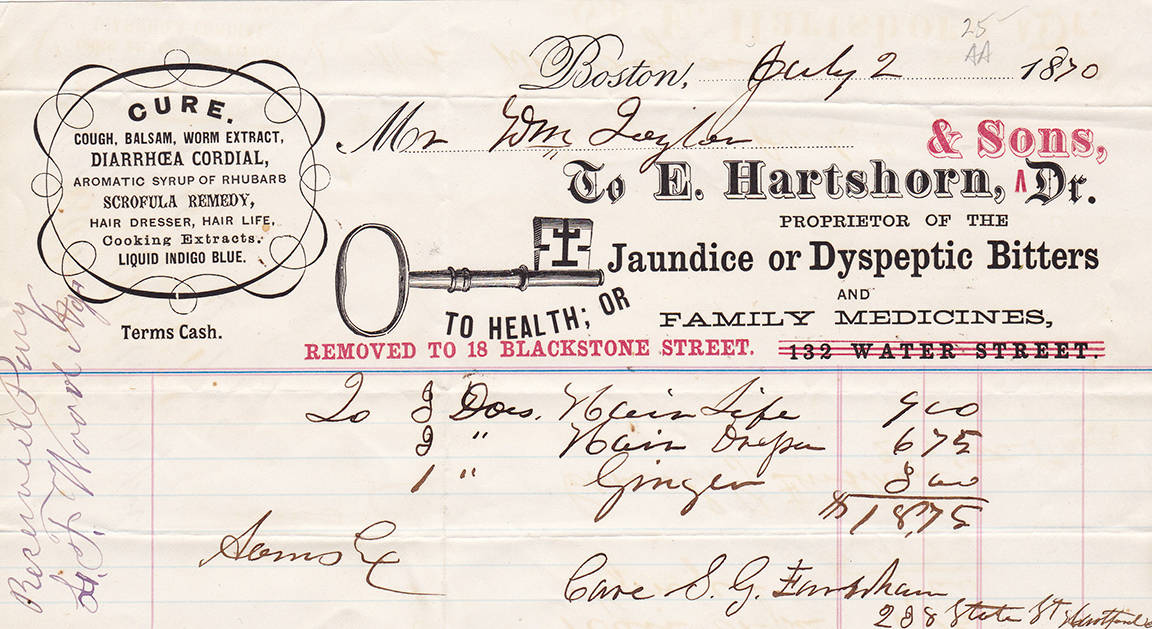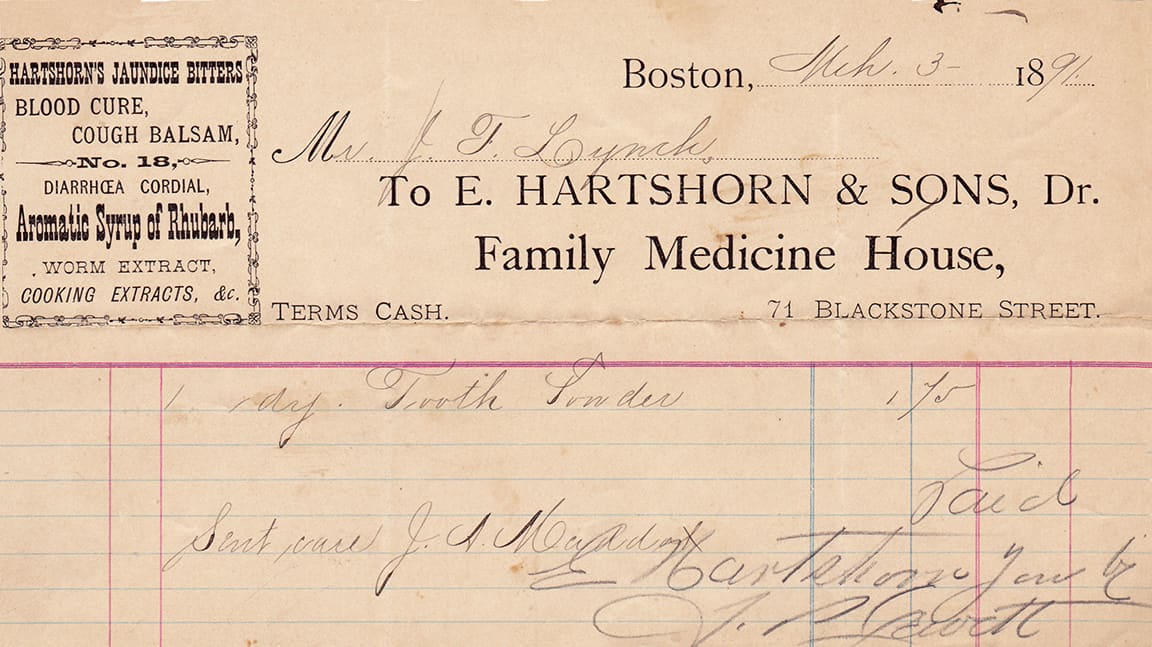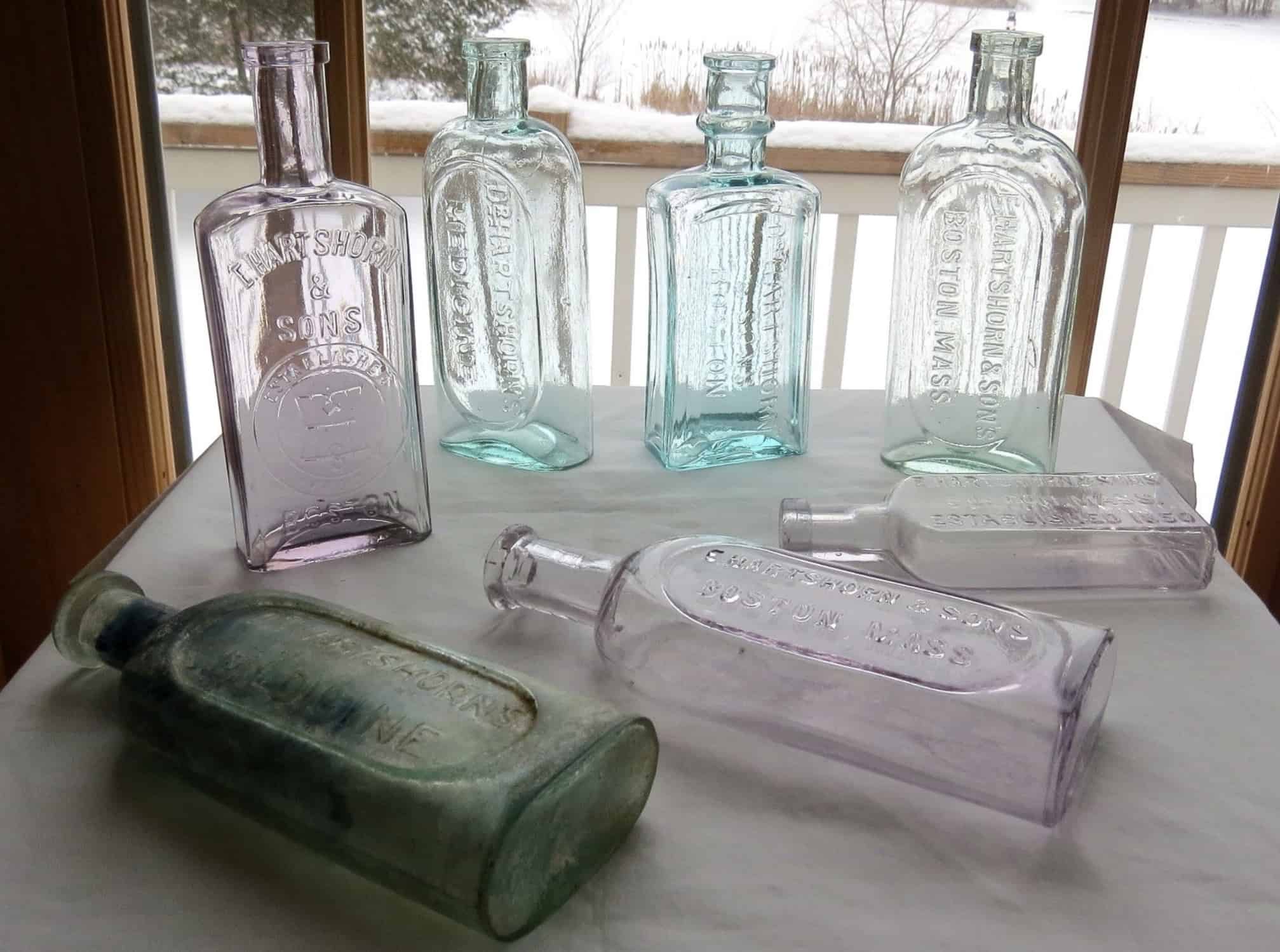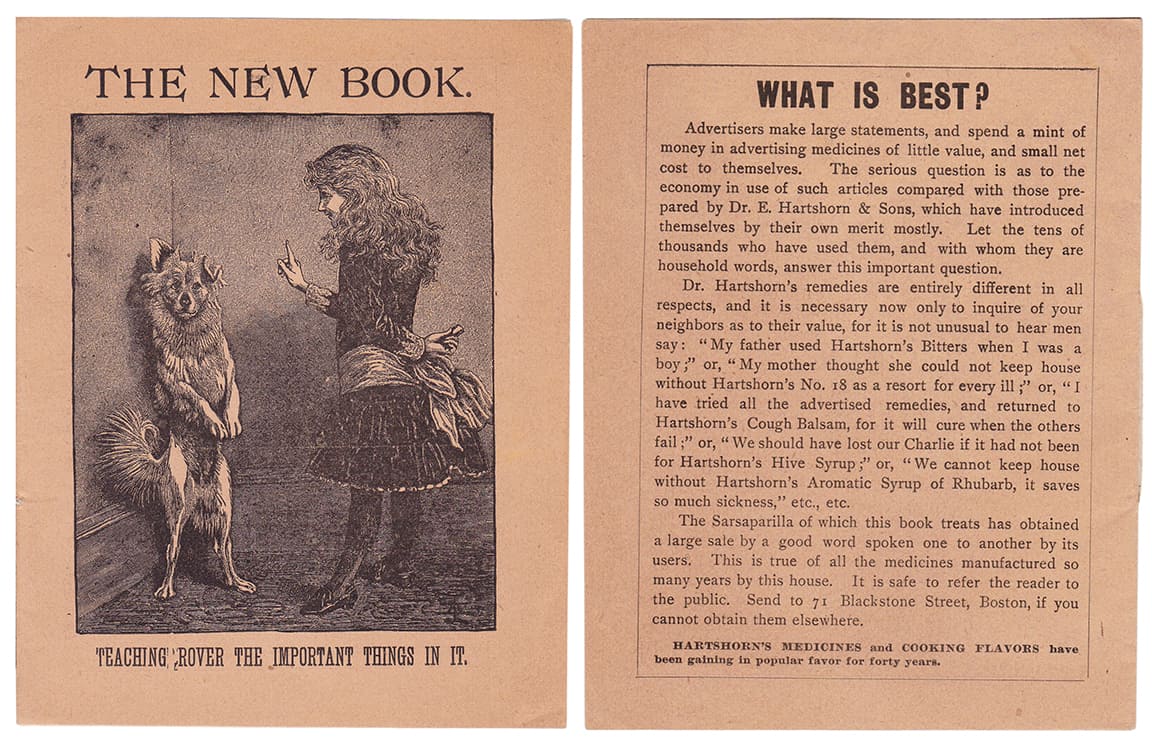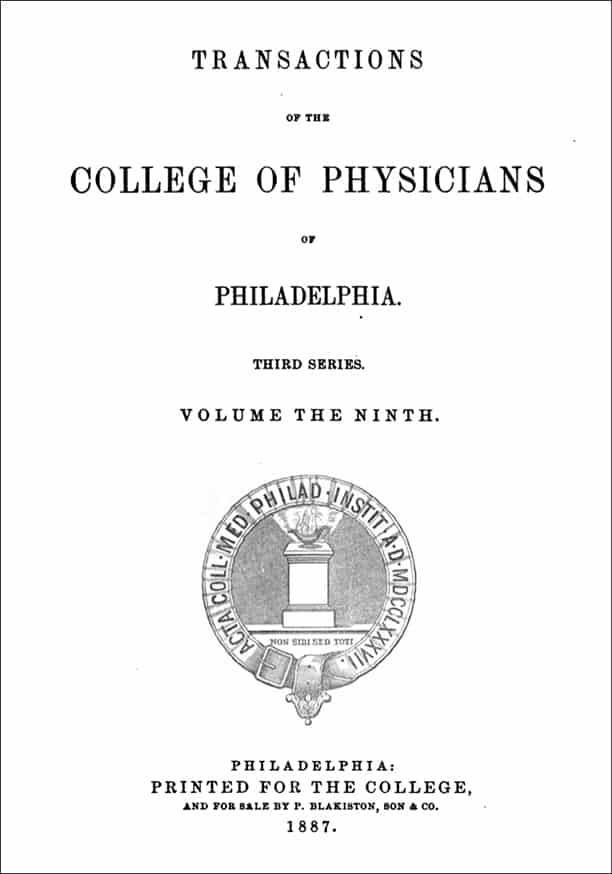Edward H. Hartshorn – Hartshorn’s Family Medicines
Dr. Hartshorn’s Jaundice Bitters
25 August 2018 (R•092018)
![]() Recently, I saw the above Dr. Hartshorn’s Jaundice Bitters bottle on eBay (see listing) and liked the color and label which features a key. I don’t have an example in my collection as they are fairly common so I figured I would add one somewhere down the road. In the meantime, I thought it might be nice to pull together some information and support imagery as Dr. Hartshorn was rather well-known and put out a lot of products and advertising like these Dr. Hartshorn’s Jaundice Bitters “Key to Health” advertising trade cards to support his brand.
Recently, I saw the above Dr. Hartshorn’s Jaundice Bitters bottle on eBay (see listing) and liked the color and label which features a key. I don’t have an example in my collection as they are fairly common so I figured I would add one somewhere down the road. In the meantime, I thought it might be nice to pull together some information and support imagery as Dr. Hartshorn was rather well-known and put out a lot of products and advertising like these Dr. Hartshorn’s Jaundice Bitters “Key to Health” advertising trade cards to support his brand.
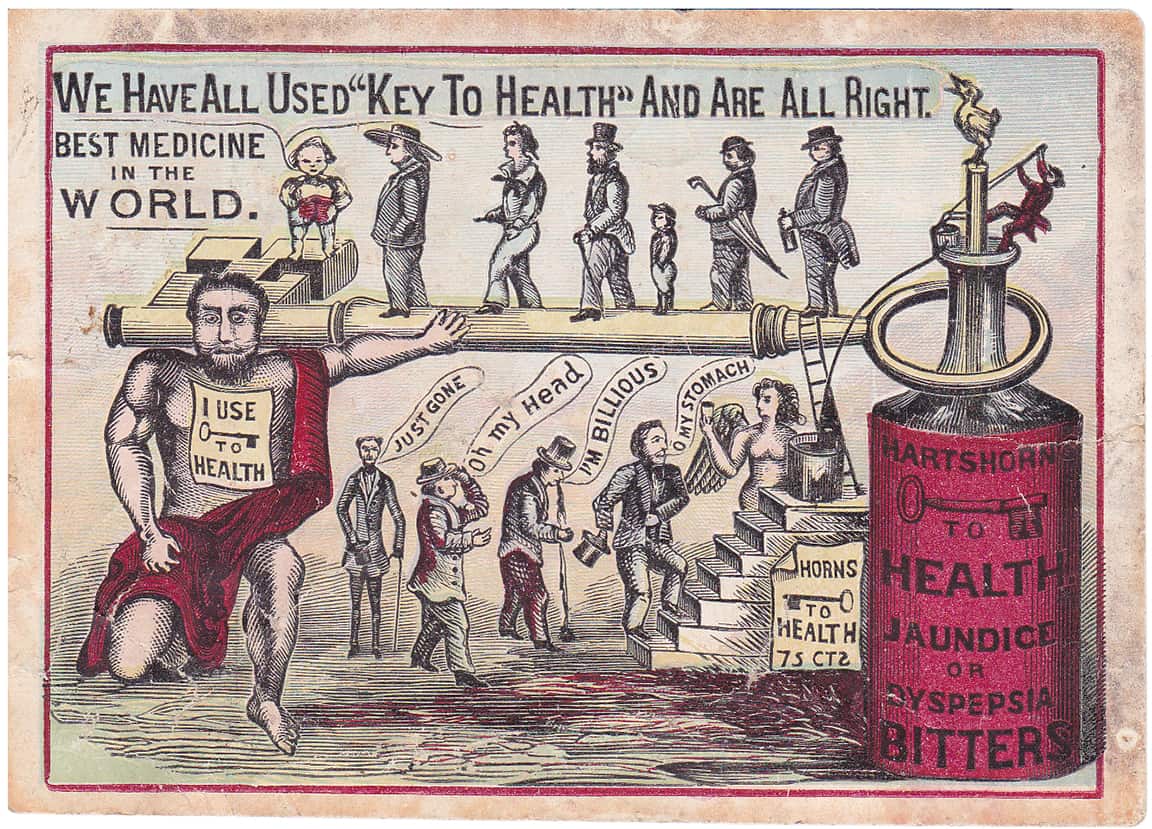
Dr. Hartshorn’s Jaundice or Dyspepsia Bitters “Key to Health” advertising trade card (front) – Joe Gourd Collection
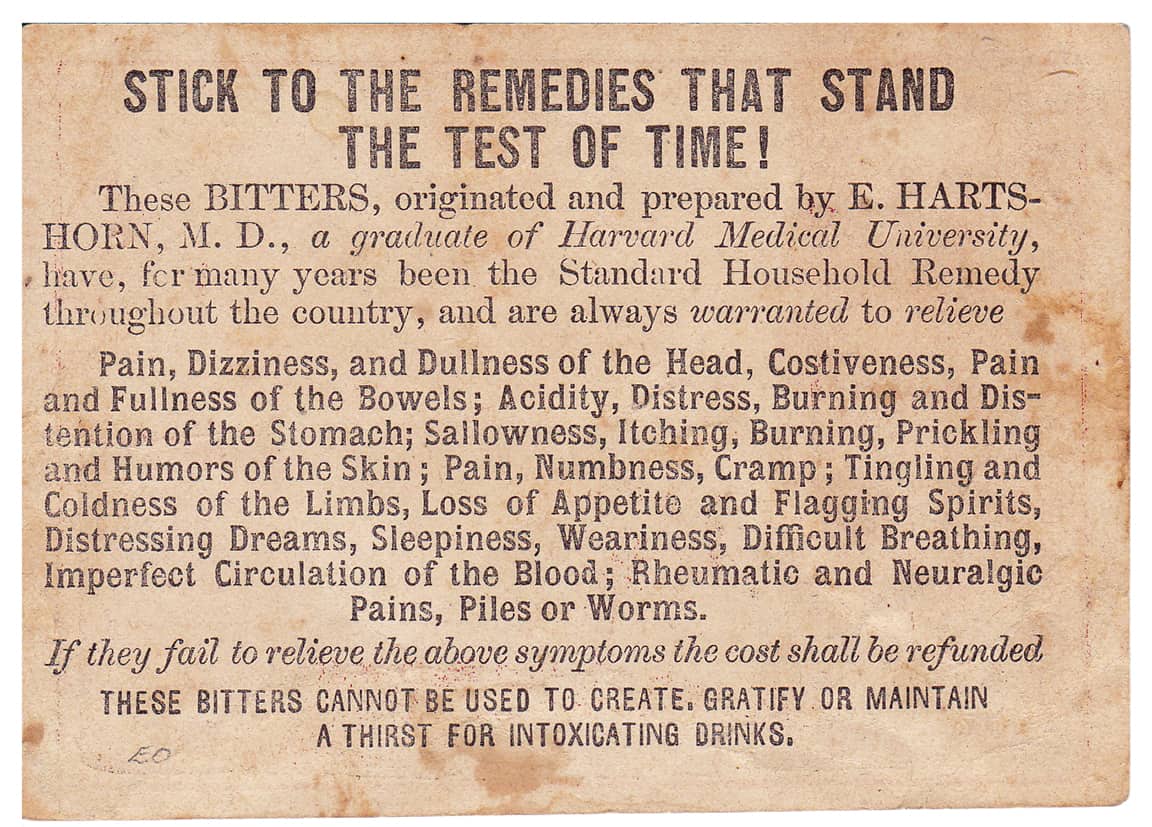
Dr. Hartshorn’s Jaundice or Dyspepsia Bitters “Key to Health” advertising trade card (back) – Joe Gourd Collection
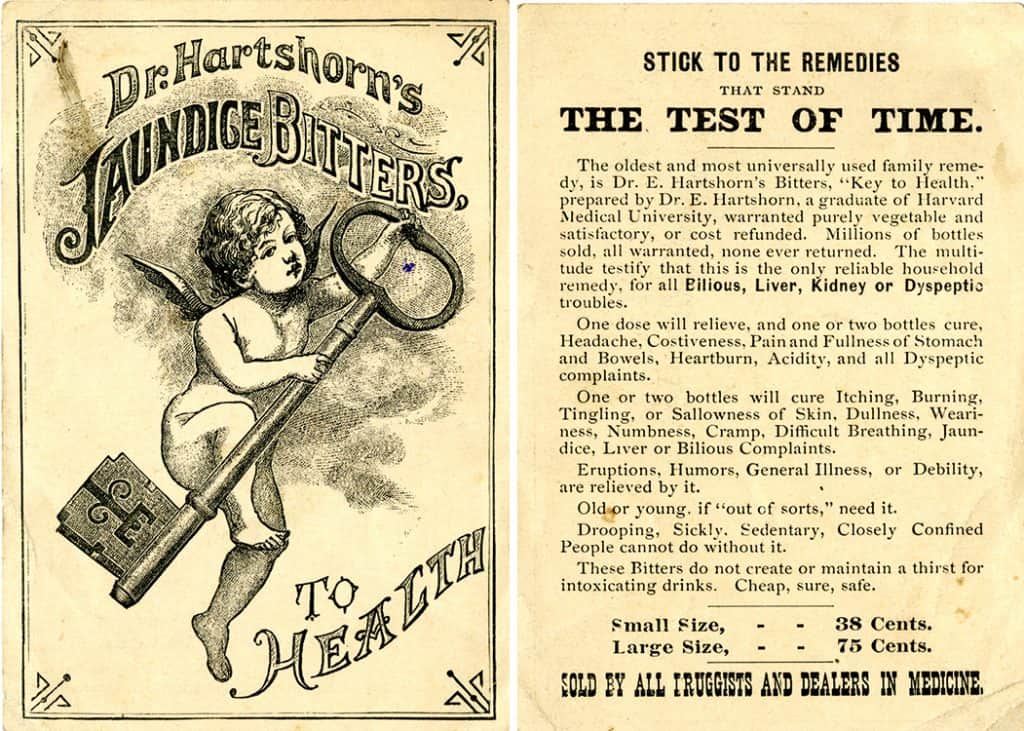
Dr. Hartshorn’s Jaundice Bitters “Key to Health” advertising trade card. – University of Rochester Miner Library
The subject bottles here at the top the post are not embossed bitters but are embossed “Dr. Hartshorn’s Family Medicines” on the reverse. This copy surrounds an embossed bunghole or circle around a dot. Two sizes of bottles exist.
Reproductions of this bottle were made with the base embossed “Crownford China Co.” with a monogram logo. Crownford China Company appears to have been a wholesale glass product company based in New York City, active during the period of approximately 1964-1973.
Edward Hartshorn was born on 28 June 1817 in Gloucester, Massachusetts. Hartshorn was a pharmacist and drug manufacturer whose advertising stated that he was a graduate of Harvard Medical School. He first located his practice in Berlin, Massachusetts around 1841. The following year he married Lucy Elizabeth Howe, daughter of Solomon and Sarah Howe of Berlin. Their only children were Edward Howe and William Henry Hartshorn.
After several years of successful practice, Hartshorn moved his practice and business to Boston under the name of Hartshorn’s Family Medicines. They manufactured quite a variety of medicines and cooking extracts. He said his bitters would cure just about anything (see label copy further below). Dr. Hartshorn took his sons into co-partnership and changed the business name to Hartshorn and Sons. Dr. Hartshorn died in Worcester, Massachusetts at the age of 89, on 25 July 1906.
The Carlyn Ring and W.C. Ham listing in Bitters Bottles is as follows. The listing may want to be updated to include the additional information presented here and the bunghole embossing.
H 62 L…No. 42. Dr. Hartshorn’s Family Bitters
c // DR. HARTSHORN’S ( vertical ) / FAMILY ( cu ) / MEDICINE’S ( vertical ) //
Dr. E. Hartshorn, Water Street, Boston, Massachusetts
9 1/2 x 3 1/2 x 2 1/4 (6 1/4)
Oval, Aqua, LTC
Label: No. 42. The sure (motif key) to health. Is not warranted to cure every disease, but will invariably relieve the dyspeptic and bilious class, embracing two-thirds of the people, of pain, dizziness and dullness of the head; costiveness, pain and fullness of the bowels; acidity, distress, burning and distension of the stomach; sallowness, itching, burning, prickling, and humors of the skin, pain, numbness, cramp, tingling and coldness of the limbs; loss of appetite, and flagging spirits, distressing dreams, sleepiness, weariness, difficult breathing, and perfect circulation of blood, rheumatic and neurologic pains, piles, or worms, fever and ague, or any symptom depending on derangement of the stomach, liver, bowels and kidneys, or the cost will be refunded period.
The experience of the Dr. Hartshorn in a medical practice of 30 years, has availed to condense in this medicine the purest and most effective vegetable tonics and laxatives, in such nice proportions, that it may be taken under all circumstances, excect fever, (if in laxative doses), for all bitters should act on the bowels so as to quicken the secretion of all the organs, and purify the blood.
Price 75 Cents
H 62.5 L… Free Sample DR. HARTSHORN’S DYSPEPTIC OR JAUNDICE BITTERS (Key to Health) E. Hartshorn (au ) // & Sons / ESTABLISHED ( au ) / monogram E H & S / 1850 ( au ) / BOSTON //
5 x 1 7/8 (3 5/8) 3/16
Rectangular, Aqua, NCS
Label: The remedy of thousands for 25 years, for sick nervous dull headache, dyspepsia, bilioness, jaundice, poor appetite, languor, geneal illness, or any derangement of the stomach, liver or kidneys.
Drug catalog: 1892 Goodwin
Here are two billheads. The “Key to Health” graphics appears on the first billhead and drops off on the second 1891 billhead. Both prominently note Dr. E. Hartshorn’s Jaundice Bitters.
Here is a nice grouping of Dr. Hartshorn bottles on eBay now (see listing) for $68. That is quite a deal. Along with his anchor bitters product, Dr. Hartshorn also put out many other remedies such as Hartshorn’s Hive Syrup, Hartshorn’s Syrup of Rhubarb, Hartshorn’s No. 18, Hartshorn’s Cough Balsam, Hartshorn’s Sarsaparilla and Iron, Hartshorn’s Ammonia Compound, Hartshorn’s Worm Extract and Hartshorn’s Cotton Seed Oil. He even sold sauce and flavoring in bottles like Hartshorn’s Pure Jamaica Ginger.
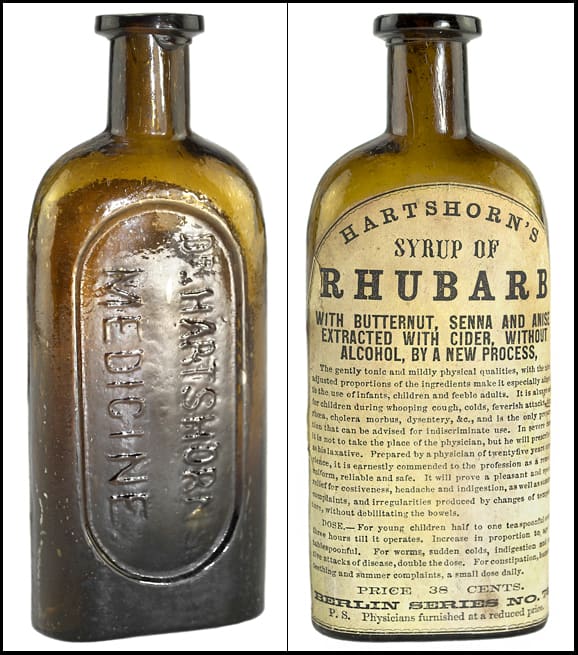
7. “DR. HARTSHORN’S / MEDICINE” (in an oval), (Odell, pg. 165), American, ca. 1855 – 1865, yellowish ‘old’ amber, 6”h, smooth base, applied mouth, 99% original label in part reads: ‘Hartshorn’s Syrup of Rhubarb, Price 38 cents, Berlin Series Co 73’. Perfect like new condition, extremely rare original label. A great labeled medicine bottle, possibly blown at Stoddard, New Hampshire. – Glass Works Auctions | Auction #124
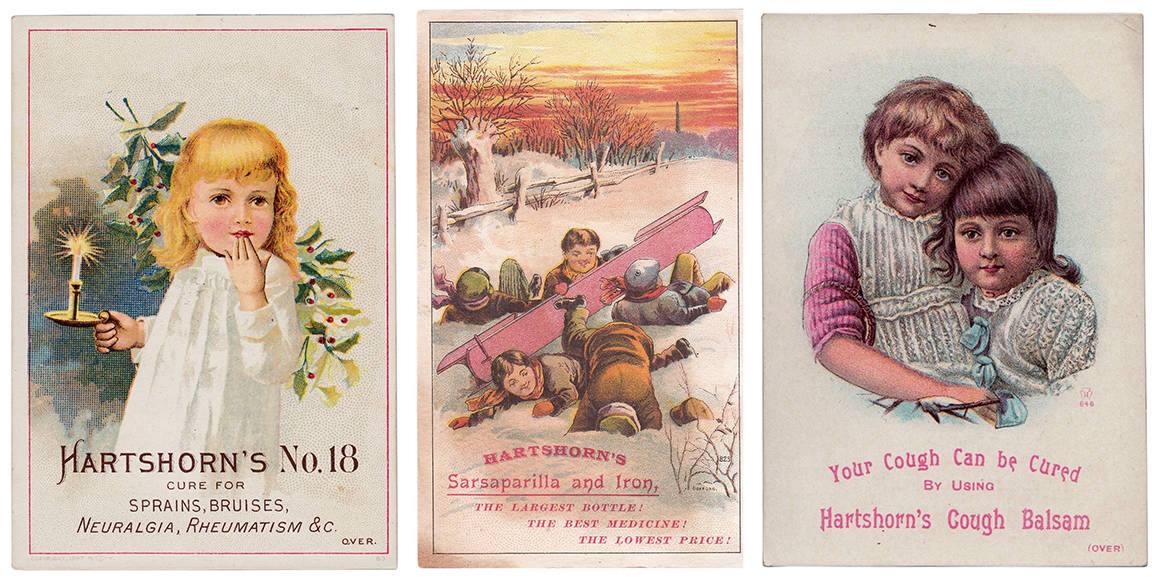
Three Dr. Hartshorn advertising trade cards. Many other Hartshorn cards are generic or stock cards with the Hartshorn product information on the reverse. – eBay
Here below is a biography of Dr. Edward Hartshorne (note additional “e” at the end of Hartshorne”) from Transactions of the College of Physicians of Philadelphia. – 1887
This is not our man and can confuse the researcher with the similarity of names, education, and years of operation. I included this part as I admired all that this man accomplished.
EDWARD HARTSHORNE, A.M., M. D.
Edward Hartshorn E, the second son of the late Dr. Joseph Hartshorne, was born in Philadelphia, in 1818. Early in boyhood he manifested a somewhat nervous temperament, whose vivacity and impulsiveness remained through life; though mostly, as he grew toward maturity, brought well under control by his trained judgment and will. Having been prepared for college at a private academy in Philadelphia, he went to Princeton, and was there graduated B.A. in 1837; taking his degree of A.M. in 1840. His desire to study medicine was not at first approved by his father, whose large experience of the toils and anxieties of the profession made him hesitate about their acceptance by his son. Edward’s choice, however, was very positive; and his father consented, with a determination that he should have every advantage attainable in fitting himself for the work of a medical man. While a student at the University of Pennsylvania, he embraced an opportunity to gain early experience in dispensary practice, under the direction of Dr. W. W. Gerhard. His degree of Doctor of Medicine was taken in 1840. His graduating thesis, on “Pseudarthrosis, its Causes and Treatment,” was published by request of the Faculty of the University; and occupied thirty-six pages in the American Journal of the Medical Sciences. It was an exhaustive and well-digested monograph upon its subject, giving, from authoritative sources, all that was then known concerning the causation and various modes of management of ununited fracture. It might be consulted with advantage by writers or practitioners at the present time.
Immediately after graduating, Dr. Hartshorne was engaged for several months as first Assistant Physician, under Dr. T. S. Kirkbride, in the newly established Pennsylvania Hospital for the Insane, in West Philadelphia. From 1841 to 1843 he was one of the Resident Physicians of the Pennsylvania Hospital in the city, where he developed the special interest in surgical practice which afterward characterized him; as well as that enthusiastic love of the medical profession, which grows warm more often within the walls of a hospital than elsewhere.
His acquaintance with the care of the insane, and with institutional life, was afterward added to by short periods of service with Dr. Kirkbride, and once for some weeks with Dr. Pliny Earle at the Friends’ Asylum for the Insane, at Frankford, near Philadelphia. But a more important and conspicuous duty came to him, as the first Resident Physician in the Eastern Penitentiary, in Philadelphia. In 1843 he was called to this position, taking the place of a distinguished mediciil gentleman, whose appointed service had been only that of occasional or periodical visitation of such inmates of the prison as required special medical attendance. The system of separate confinement in prisons was then a comparatively new experiment; for the success of which a truly scientific apprehension of its conditions, and its best possible practical administration, were of considerable public importance.
This critical notice, in the American Journal of the Medical Sciences, for April, 1844, of Dr. Hartshorne’s first Annual Report as Physician to the Penitentiary, says:
“The Pennsylvania Penitentiary system has been, for some years past, vehemently and repeatedly assailed by certain philanthropists, who, misguided by their prejudices or too tender sensibilities, have denounced it as injurious to the health and sanity of prisoners. The friends of the system have thus far looked in vain to the proper source for sufficient statistical data to enable them to silence these imputations. Most happy are we to say that this want will not much longer remain unsatisfied. The present enlightened and clearheaded physician of the Eastern Penitentiary, in the able report before us, adduces many statements calculated to disabuse the public on this subject, while the discernment it displays holds out the promise, which we are sure, from our knowledge of Dr. Hartshorne, will be fulfilled, that all the facts calculated to throw light on the subject will hereafter be most sedulously collected, and faithfully presented.”
In this report, statistics are given, proving the entire absence of evidence to show that there is any cause of disease or impairment of general health peculiar to the separate system of imprisonment. There were sent out from the Penitentiary during the year, after confinement for more than two years, in unimpaired health, 50 inmates; improved health, 21; said to be impaired, 8. Eleven prisoners died during the year. Nearly all of those put down as in impaired health were but slightly indisposed, or merely stated that they were not so well as they had been before admission. Of the deaths, the causes were, phthisis in six cases; scrofulous peritonitis in two; scrofulous enteritis in one; marasmus and incipient phthisis in one; syphilis and erysipelas in one. Only four of the eleven cases could be said in any sense to have originated in the prison; while a comparison with the records of five State prisons on the Auburn congregate plan showed their mortality to be greater than that of the Eastern Penitentiary. The ratio of mortality, moreover, in the latter, was a little below, with the white inmates, and with the colored but a little above, that of the general population of Philadelphia for the same year. The report goes into an elaborate analysis of these comparative estimates, with reasonable explanations of the observed differences.
On another important question, often agitated, Dr. Hartshorne expressed in this report a decided conviction, based on facts within his view. This was, the influence of separate confinement on the minds of prisoners. Because of the mistaken idea that theirs was solitary confinement (the fact being that they see a number of persons, officials and others, daily, being merely separated from other prisoners), many people imagined dreadful things in regard to the frequent production of insanity within the walls of the Penitentiary.
This imagination was embodied before the world, in the lively style natural to a writer of works of fiction, by Charles Dickens; his picture being suggested particularly by an interview with a certain prisoner in his cell. It happens, however, in contradiction to the great novelist’s apprehension, that this same prisoner lived on, in a fair condition of cheerfulness, for many years, being known to present no marked symptoms of insanity.
Dr. Hartshorne’s observations afford no support for the above-mentioned popular misconception. There were, during the year 1843, among 487 prisoners, only five recent cases of mental derangement; of these, three had existed before admission, and of the two which seemed to originate in the institution, one was a doubtful case, probably feigned, and the other was one of hypochondria rather than hallucination. If, even, there should be discovered more instances of insanity in a prison where the inmates arc under separate inspection and treatment, this might be accounted for by the better opportunity for a careful and correct diagnosis of the mental condition of every one, than where they are kept under the in terrorem discipline of the congregate system. On the whole, this report must be regarded as a contribution of unusual practical value to the scientific basis of modern penology. A second edition of it, published by the Inspectors of the Penitentiary, in 1845, was largely circulated in England, besides being translated and republished in France, Germany, Belgium, and Holland.
In 1844, Dr. Hartshorne went to Europe, to extend his studies, especially by observation in the large hospitals of the Continent. Two years were thus passed; with only a moderate indulgence in visits to such celebrated places as are of interest to all tourists.
Returning home, he at once began the work of a practitioner; which continued throughout his life. For one year, he edited the Philadelphia Journal of Prison Discipline. After that, his whole interest was concentrated in his profession. His contributions to medical literature became frequent; beginning with articles and reviews in the Philadelphia Medical Examiner, then edited by Dr. Hollingsworth; afterward, reviews and numerous bibliographical notices in the American Journal of the Medical Sciences, especially between 1850 and 1870; also, in the North American Medico Chirurgical Review, so brilliantly conducted for a time in Philadelphia by the late Professor S. D. Gross. Most of these reviews and notices were upon surgical topics; notable among them were those of Nekton’s, Miller’s, and Erichsen’s treatises upon surgery, Curling on the testis, and elaborate reviews of Barwell on the joints, of Tripler’s, Gross’s, and Hamilton’s works on military surgery, and of the first two volumes of the English edition of Holmes’s System of Surgery. In his notice, written in 1857, of Lyman on ovariotomy, he indicated misgivings, shared at that time by many surgeons, which prevented him from anticipating the remarkable triumphs belonging to a later day, in abdominal surgery.
Dr. Hartshorne wrote an extended notice of Wharton and Stille’s Treatise on Medical Jurisprudence, at the time of its publication. This subject received from him a large degree of attention. He delivered one course of lectures on Medical Jurisprudence in connection with an Association of medical gentlemen, all of whom obtained subsequent distinction as public instructors. With him, however, although gifted with great fluency and clearness of expression, the toil of lecturing, with that of preparation to meet his own exacting standard, proved to be disproportionate to its probable returns; and the course was not repeated. In 1853, he was called upon to edit, with notes and additions, the American edition of Taylor’s masterly work on Medical Jurisprudence. This task was so well accomplished as to meet with general approbation. A reviewer mentions among his important additions, his remarks upon ” the non-immediatefatality of fractures of the skull; the sometimes fatal administration of oil of tansy to produce abortion; the rights and interests of persons of doubtful sex, or afflicted with sexual malformation; the pathology and treatment of asphyxia, from drowning, hanging, and poisonous inhalations; and the various perplexing questions connected with mental aberration in its various forms.” Most of theseand other additions were incorporated by Dr. Taylor in his subsequent editions; and the able cooperative service of his American editor was acknowledged by Dr. Taylor in a very friendly manner.
Dr. Hartshorne married, in 1850, Adelia C. Pearse, widow of Oliver Pearse, and daughter of John Swett, formerly of Boston. This lady survives him, with one son, Joseph Hartshorne, the only one left of five children who were born to him.
In the life of a practitioner of medicine and surgery, full as it is of profound personal as well as professional interest, events are few; at least those of a kind that will well bear narration. Dr. Hartshorne was for seven years an attending surgeon to the Wills Hospital for the Blind and Lame; afterward, till 1864, surgeon to the Pennsylvania Hospital. With many others usually engaged only in civil practice, he was, during the war, on duty for a time as assistant surgeon, in the field, after the battle of Antietam; and for two or three years, as attending or consulting surgeon at the McClellan, Nicetown, and other Army Hospitals, in and near Philadelphia. In the course of this service, a poisoned wound of his left hand, incurred while amputating a very bad limb, induced a severe illness; and this had, no doubt, a depressing influence upon his health throughout the rest of his life. He was actively concerned in the organization of the Philadelphia branch of the United States Sanitary Commission, during the war, being Secretary of its Executive Committee.
Dr. Hartshorne’s energy of character, tact, and sagacity, led to his being frequently called upon for official duties requiring fidelity, discernment, and willingness to work for a useful purpose. He was Secretary of the first National Quarantine and Sanitary Convention, which met in Philadelphia a few years before the war. For several years he was Secretary of the College of Physicians of Philadelphia; afterward Secretary of its first Building Committee; then one of its Censors, and Chairman of its Hall Committee. Few Fellows of this College have shown a more zealous or more continuous practical interest in its welfare. He was, for a long time, a Manager of the Episcopal Hospital of Philadelphia; and, until the time of his death, one of the Managers of the Hospital of the University of Pennsylvania; also, for some time, Chairman of the Executive Committee of the Medical Alumni Association of the University, and Vice President of the Princeton Alumni Association of Philadelphia. He was successively elected Vice-President and President, of the Pathological Society, and of the Ophthalmological Society of Philadelphia. When the American Medical Association met in this city, in 1872, he was Chairman of its Committee of Arrangements. In the performance of the duties, sometimes arduous, belonging to these various appointments, while he was always decided in his opinions, and very outspoken in regard to them, no one could say that he was not fair in dealing with others, or was actuated by any motives apart from his desire of general usefulness.
When the Penn Mutual Life Assurance Company of Philadelphia was organized, in 1847, he was chosen its first Medical Examiner. At that time, the business of life assurance, especially in regard to the right estimation of the probability of life in individual cases, was comparatively immature. Dr. Hartshorne brought his strong natural judgment and trained diagnostic ability to bear upon this subject, in what was, in this community at least, a pioneer service. For nearly thirty years he performed this duty assiduously for the Penn Mutual Company. At one time, while suffering from a bronchial attack, which ought to have kept him within doors, he was summoned as an important witness for the Company in a lawsuit. Fatigue and exposure for several hours, in the court-room and in the transit between it and his home, aggravated his attack into a serious illness. Slow convalescence and attendant debility necessitated his going South to recruit; and, indeed, his vigor of health was never thereafter entirely restored. The failure of the Company fully to appreciate this faithfulness and self-sacrifice, shown by his being not very long afterward superseded in his office, stands without reasonable justification; having its place only in that category of facts which has given rise to the proverbial expression, which may be thus freely rendered into Latin: in corporibus corporatorum corda nusquam sunt.
Early in his married life, Dr. Hartshorne became a member of the Episcopal Church. He was for some years a vestryman in the Church of the Epiphany, and afterward in St. Andrew’s, Philadelphia.
Inheriting from his father a strong constitution, with much capacity for work, he would probably have attained quite long life but for the impairment of his vital energy by the two attacks of illness which have been mentioned. After contending for eight years with chronic nephritic disease, during which period he availed himself from time to time of the very kind and able counsel and attendance of Drs. Alfred Stille, James Tyson, and Louis Starr, he passed tranquilly from this life, near midsummer, 1885, aged sixty-seven years.
Dr. Edward Hartshorne was, throughout his adult life, typically a medical man. No interest ever took his attention or activity far, or long, outside of the profession. Within its limits, he was a great reader; having in his library and on his table not only standard works, but many of value picked up in such ways as only specialists know, while looking out for publications agreeable to their tastes or useful in their labors. He was naturally conservative. This was shown by his withholding approval from the movement actively going on in his time, toward the admission of women into the medical profession. In surgery, allusion has been already made to his early hesitation in reference to the acceptance of the legitimacy of ovariotomy. Brought up under the regime of the lancet, of which his father, Dr. Joseph Hartshorne, was a frequent, though always a careful and moderate user, he never surrendered the opinion that there are cases in medical practice in which venesection is not only safe, but one of the most valuable of remedies. While, however, thus tenacious in regard to matters of principle, he was ever ready to avail himself of new discoveries applicable in practice. So far was he from being antiquated in this respect, that few physicians were better acquainted with recent developments in materia medica and pharmacy; and very few are so well provided with the knowledge of those many lesser resources and expedients, outside of all the books, which help in the make-up of a thoroughly equipped practitioner.
As to his conservatism, his position, deliberately taken, was, that it is better to be somewhat slow in the acceptance even of new truths and real improvements, than, by reckless haste in the pursuit of novelty, to be often caught by false pretensions, or follies which last but for a day. Especially may such caution be respected, indeed commended, in connection with the medical profession; on account of its weighty responsibilities in regard to the health of individuals and communities.
Personally, Dr. Hartshorne was very affable; fond of the society of his professional confreres; always deeply interested in his patients, and winning from them implicit confidence and warm attachment. Besides his skill and efficiency as a surgeon in hospital and private practice, and his sound judgment and executive ability as an active member of two important hospital managing boards, he represented, in its most attractive and estimable features, the character of a thoroughly trained, devoted, trustworthy, and always trusted, indispensable, family physician.

